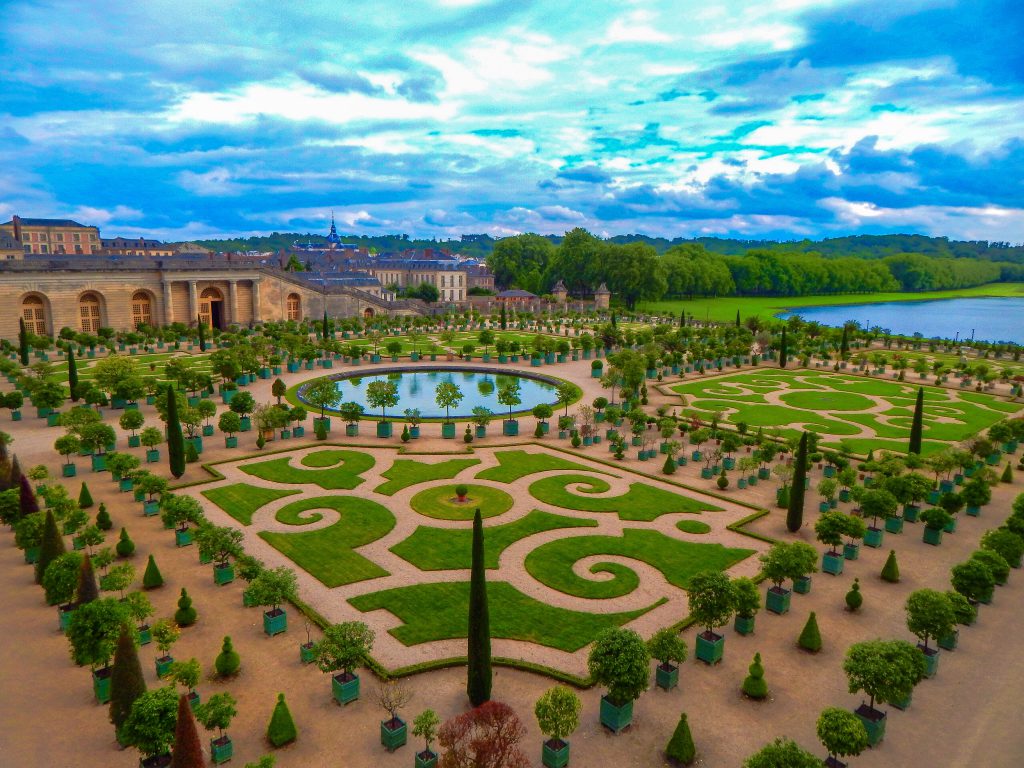On the Taste of France tour you will have the option of going to Versailles- in fact, a lot of the EF College Study Tours that go through France have the option to visit this palace of opulence. If you are thinking of taking a pass on it, don’t – and here’s why:
If ignorance is bliss, then Versailles was a pre-revolutionary heaven. I understand that by their very definition, palaces are cocky displays of over-the-top wealth—but Versailles is exceptionally arrogant. Louie XIV took measures here that went above and beyond your average royal splurging and straight for the kind of eccentricity fit for a king. The man injected steroids into an already buff sense of class disparity by burying himself in marble and silver. The whole place was basically constructed to keep anyone resembling an 18th-century version of you or I out of it. But luckily for us, we live in a time that allows us to stroll right through without having to win Louie or Marie’s notoriously difficult favor.

Photo by Clark Van Der Beken on Unsplash

It’s hard to describe the interior of the palace, but if I had to do it in one word, it would be: exhausting. Not the bad kind of exhaustion. It’s the kind you feel after spending five hours in an incredible museum exhibit, or watching an entire season of Breaking Bad in one sitting. It’s an overwhelmingly stimulating kind of exhaustion. As soon as you step inside, your senses are fighting for attention in one long jaw-dropping moment that has you inspecting every square inch around you. The gold. The bronze. The Mirrors. You’ll be looking up at the stunning Le Brun paintings covering the ceiling, staring down at the gilded detail of the guéridon statues and gazing out through the arcaded windows all while pretending to register whatever your guide is trying to tell you. I recommend stretching your neck beforehand, and bringing an audio recorder.

Not to be outdone by its stony cousin, the organic opulence found in the Garden of Versailles is just as impressive. Gardens aren’t usually something you think of as being intimidating, but I guess that’s what you get when you give the Sun King 2,000 acres of land to play with. The area just outside of the palace is predictably pocked with classical statues and fountains, but during my visit a contemporary installation from Surrealist artist Giuseppe Penone was on display. France has always seemed to have one foot rooted in the past and one daringly headed towards the future (with a history like theirs, you tend to get really good at that), and seeing Penone’s wildly modernized tree art next to the shrubbery of the Ancien Régime sort of put France’s whole attitude into perspective for me.

The palace itself is just a short drive from Paris in the suburb of Versailles, which looks and feels a lot like the Newport of Paris (without the ocean). It’s wealthy, accommodatingly touristy and has a laidback charm that encourages lounging in a serious way. A few steps away from the palace brings you to the Neo-Classical Church of Notre-Dame on the Rue de Paroisse—a lively street filled with antique bookstores, tobacco shops and cafés. If you’re looking for something sweet (or savory, or salty) wander across from the church to JC Gaulupeau, a boutique patisserie overflowing with carefully crafted works of edible art. Everyone has their favorite macaroon spot in Paris, and this is mine. Just off of the Rue de Paroisse on Rue Hoche is the ultimate hole in the wall—Bar Notre Dame. This is the definitive no-frills-type-café with one beer on tap (Kronenbourg 1664) and two tables out front, but it really captures the essence of modern day Versailles: A casual oasis in one of history’s most straitlaced sites.
Check out our other France blog posts here.

